As an Amazon Associate I earn from qualifying purchases.
You can read my full disclosure statement here.
In this article, we will be going over when to start vegetable seeds for gardening zone 8b, including indoor seed starting, seeds directly sown in the garden as well as winter sowing.
Garden Zone 8b Planting Guide
Knowing when to start seed in your garden, is a question that many new gardeners have, as the seed packet instructions can be confusing and hard to understand.
Today I am going to go over both what is recommended by the experts as well as what I personally do and have good success with, when planting seeds here in the Pacific Northwest area in my garden zone 8b.
As always, I highly recommend taking your own notes in a garden journal, and refer back to those notes in the coming years, to see what worked well for you and what didn't!
Starting Seed via Indoor Seed Starting vs Direct Sowing
The first thing you must understand, is that in garden zone 8b, some plants need to have their seed sown indoors and some seed can be direct sown right in the garden. The reason for this, is some plants are much more tender, and need to be sown in a more controlled environment with no freezing temps or extreme temperature swings, in order to thrive.
Other plants are much more cold tolerant and hardy, and will do fine outdoors in natural conditions. (Read more about cold hardy vegetables for fall and winter growing). And some plants can be sown either way!
Then there is the option of Winter Sowing, which is kind of a middle of the road option!
Gardening is like an ongoing experiment. Every year you will have wins you least expected, as well as failures also.
So do your best this year, take notes, and try again next year. As you go, you will learn new things but hopefully this zone 8b vegetable planting guide will help guide you along.
Even those of us doing this for years and years, learn new things each year!
Other articles you may be interested in:
Seed Starting 101: Essential Seed Starting Equipment
Seed Starting 101: Winter Sowing (a simple step by step guide!)
Food Gardening for Beginners
Grow More Food with Fall and Winter Crops
Our favorite homesteading and gardening tools in our Amazon Store!
Our Garden Harvest Tally Spreadsheet is now available!
Seed Starting Schedule Printable Freebie
Sign up for my Seed Starting Schedule below, or if you are already a subscriber to my newsletter, access it in my Freebie Resource Library! (check one of my emails for the password!)
Vegetables that prefer to be sown indoors:
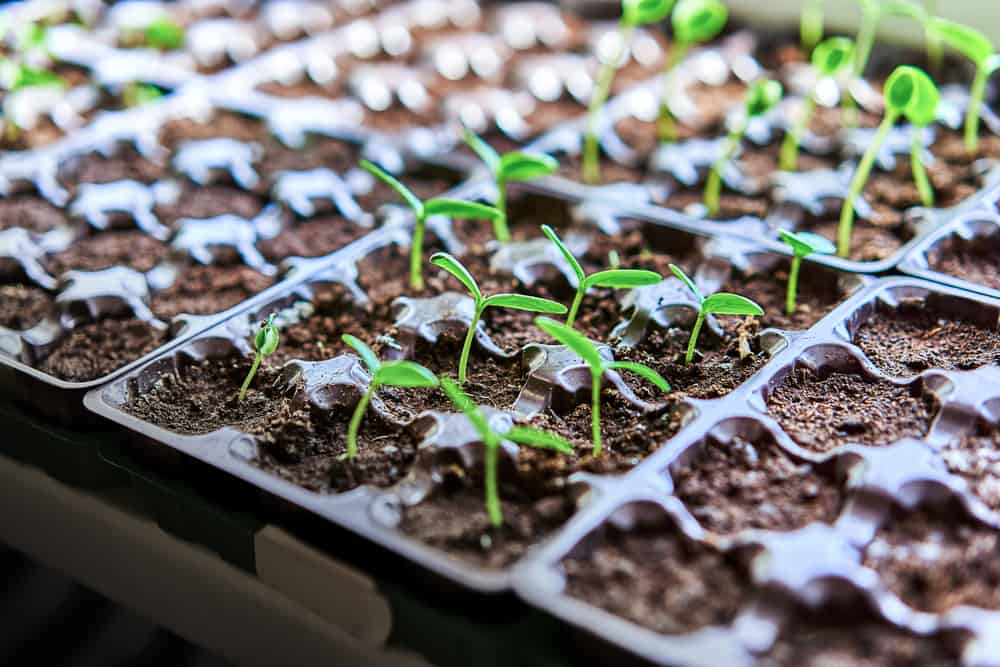
Seedlings that have been started indoors.
In our region, these vegetables are better off sown indoors either due to their tender nature, or long time frame of growing, before they are hardy enough to be transplanted outdoors. To be successful with starting seeds indoors, certain equipment is essential, like lights.
I use cheap shop lights with fluorescent bulbs and they work great. See my list of Essential Seed Starting Equipment to learn more.
- Artichokes
- Asparagus
- Celery
- Eggplant
- Onions
- Peppers
- Tomatoes
Vegetables that prefer to be directly sown in the garden:
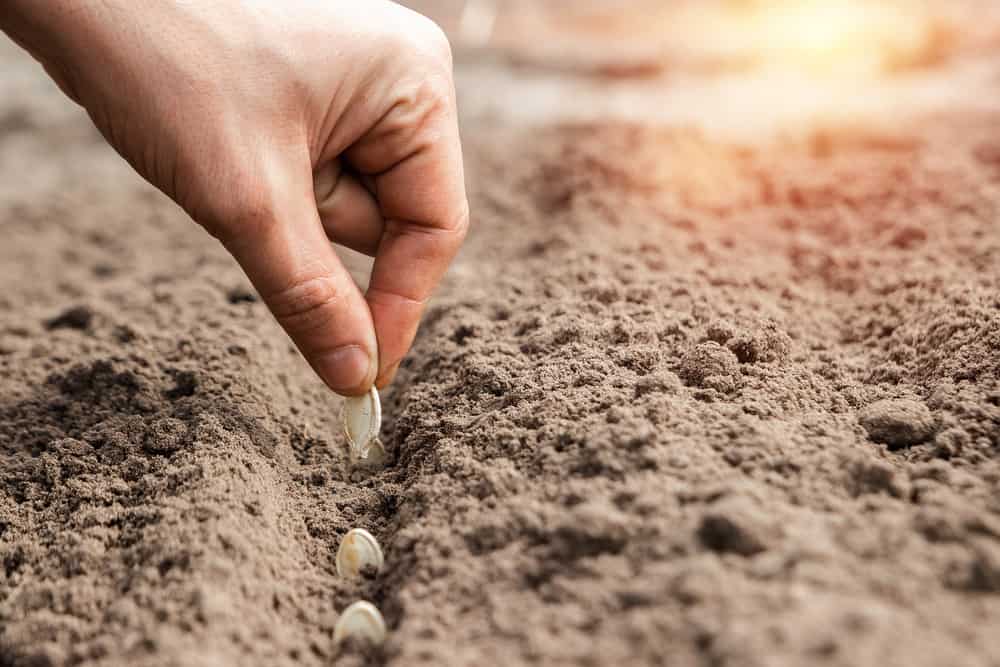
Squash seeds being directly sown in the garden. You can transplant these starts, but they usually take a week or two to recover and resume growing. I often start them both ways!
These vegetables do better being directly sown outside in our area for many reasons. Some are hardy enough to withstand the elements, and others are susceptible to shock when being transplanted.
But it is super important to know WHEN to start them outdoors.
Some of these are cold hardy plants that can be planted outside as early as February. Other's are warm season plants that need to wait until May to be planted outside.
If you do choose to start these seeds indoors, when transplanting the seedlings, try not to disturb the root ball as much as possible. Root crops really don't do well transplanting, and I will only start them directly in the garden.
Either way, be sure to get to work on getting your slug and snail population under control before direct seeding, or transplanting new seedlings. If you don't work on this first, you might come out and slugs may have ruined all your hard work.
They can do a lot of damage in just one night! So check out these Natural Slug and Snail Control Methods and start using them a few weeks or more, in advance of planting anything in the garden.
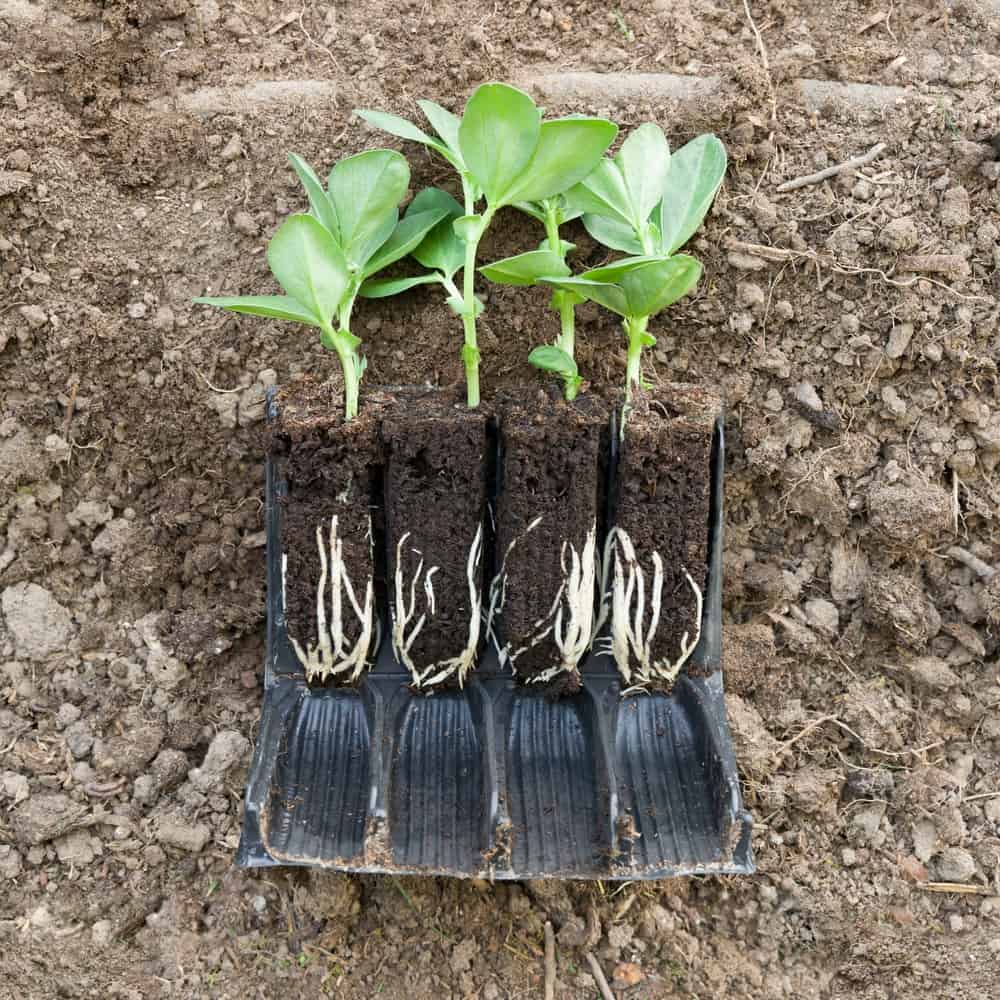
If you are planning to start seed indoors for these plants, really minimize how much the root ball of the seedling is disturbed when planting.
- Beans
- Cucurbits family (Cucumbers & Melons)
- Garlic
- Peas
- Pumpkins
- Squash family (both winter squash and summer squash)
- Root crops (beets, carrots, turnips, rutabagas, radish)
Vegetables that can be seeded either way:
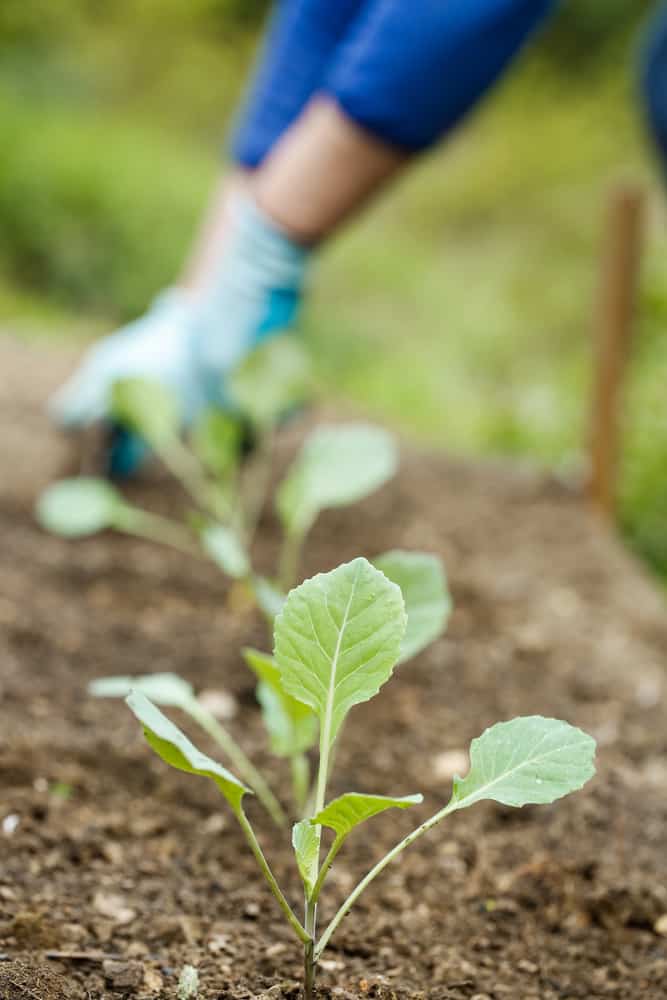
Tender young broccoli seedlings in the garden, should be this big or larger to ward of slugs and snails.
These vegetables are cold tolerant, and so they are easy to germinate when directly sown. However, in our area, slugs and snails are a huge problem, and for that reason, I will often start them indoors or by winter sowing, and then will transplant when they are a bit bigger and hardier.
- Greens (lettuce, spinach, chard, mustard, bok choy, etc)
- Brassicas (broccoli, brussel sprouts, cabbage, cauliflower, kale, kohlrabi, etc)
Important Dates for Starting a Vegetable Garden:
Important dates in my area of garden zone 8b to remember that may come in handy when planning your garden and starting your seeds are listed here:
- Last frost date in Monroe WA: April 17
- Safe date for night time temps to be above 50 degrees: May 15th
- First frost date in Monroe WA: October 27
Check here to see YOUR important frost dates. Knowing your dates is really crucial for knowing when to start seeds in your garden zone.
To find your date for above 50 degrees night time temps, I suggest you find a local vegetable gardening group near you on Facebook or ask at your local nursery. This is a critical date for planting out those warm season seedlings, so be sure to learn it for your area.
NOTE: If you are in a colder zone, you may want to wait a few weeks after the dates I have suggested. If you are in a warmer zone than me, you may plant yours a few weeks earlier than what I suggest. Click here to find out what garden zone you are in.
Seed Starting Month by Month in Garden Zone 8b
Here I will break down what seeds I start in each month, with notes showing whether I am starting indoors, direct sowing in the garden or winter sowing:
Vegetable Seeds to Start in January:
Not a lot of things can be planted in January. I spend this month mostly planning the garden, organizing my seeds, and washing and disinfecting my seed starting supplies in preparation for planting.
Indoor Seed Starting in January:
- artichokes
- asparagus
- celery
- onion family (leek, shallots, storage onions, sweet onions, etc - see my tips for planting onion seed!)
- hot peppers
Yes, artichokes and asparagus are perennial vegetables, so once you have an established bed of these, you would not need to keep starting them each year, but I sell veggie starts each year, so I start some by seed every year to sell in the spring.
Winter Sowing in January:
I don't usually start winter sowing until February, but if you are just itching to start, you can do hardy perennials this month. I would only plant half your seed this month, and then plant the other half of your seed 4 weeks later.
Take notes on when you planted and what worked better, and refer back to them next year so you will have a better idea of what worked well and what didn't.
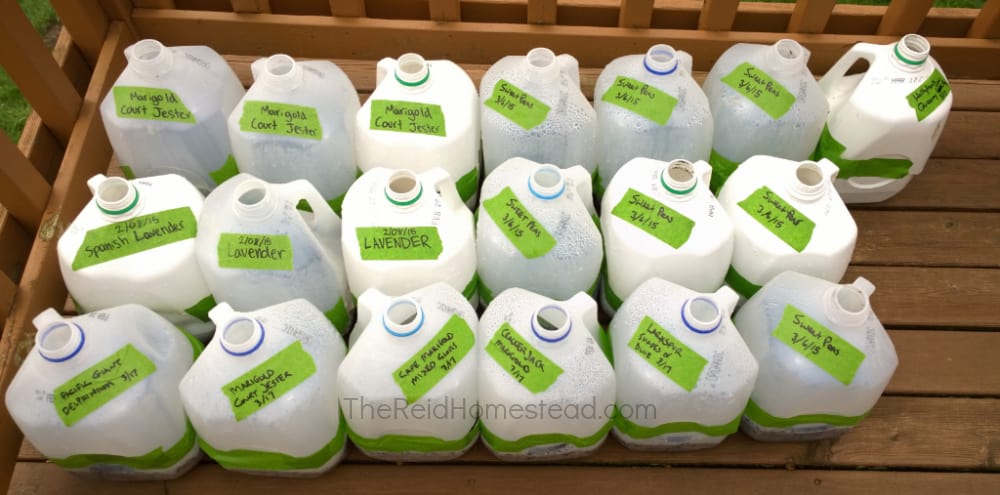
milk jugs that have been winter sown
Vegetable Seeds to Start in February:
Direct Sowing in February:
- peas
- broad beans (aka fava beans)
- brassicas
- hardy greens
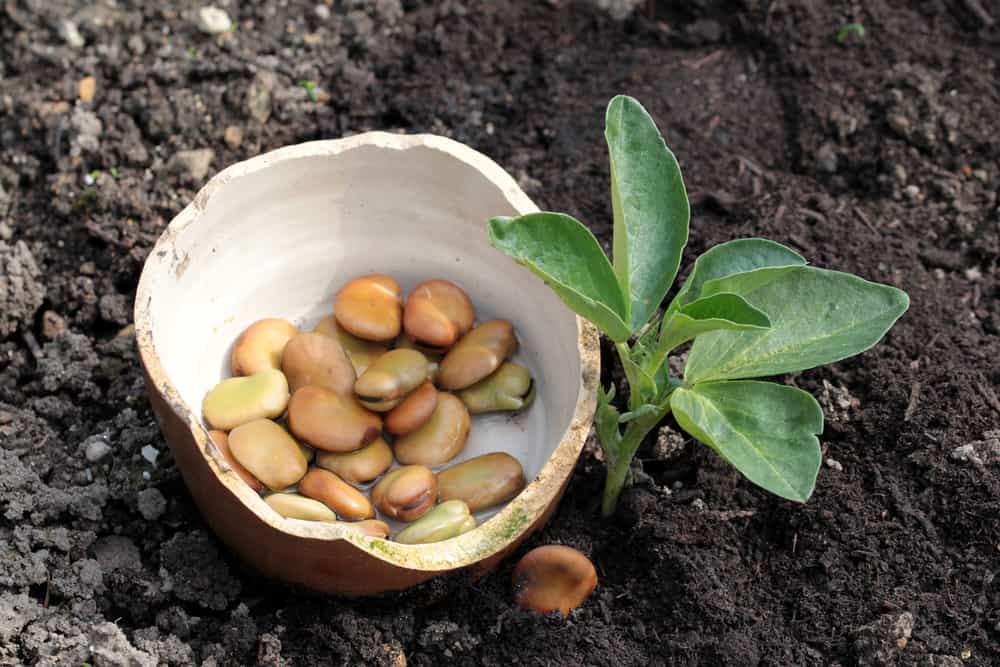
A bowl full of broad bean (aka fava bean) seeds next to a seedling in the garden.
February is the first month of the year where I direct sow things in the garden. President's Day is usually when I take note of the weather, and test the soil.
If it has been really really wet, when you squeeze a ball of soil in your hand, and if it drips, the soil is still too wet. With that much moisture in the soil, the seeds could rot before they sprout. So wait a bit longer, test the soil again in another week or two.
Also take note of the weather. Here in the Pacific Northwest, we get weather systems called "atmospheric rivers" that come through, that just drop an enormous amount of rain. I would hold off planting before one of these events as well.
When you have a clear weather window and the soil is dry enough, I direct sow broad beans (aka fava beans) and peas (see my tips for planting peas!). You could also direct sow brassica family seeds and hardy greens as well.
Start looking in your local nurseries for asparagus crowns (if you are too impatient to grow by seed) and seedling potatoes. They need to get planted soon!
Indoor Seed Starting in February:
- peppers
- tomatoes
- brassicas (broccoli, cabbage, cauliflower, kale, kohlrabi, etc)
In February I start the rest of my peppers. Hot peppers can be sown even earlier in January or December. But I am not a huge hot pepper fan, and usually start mine with my sweet bell peppers all at once in February. (see my tips for planting pepper seed!)
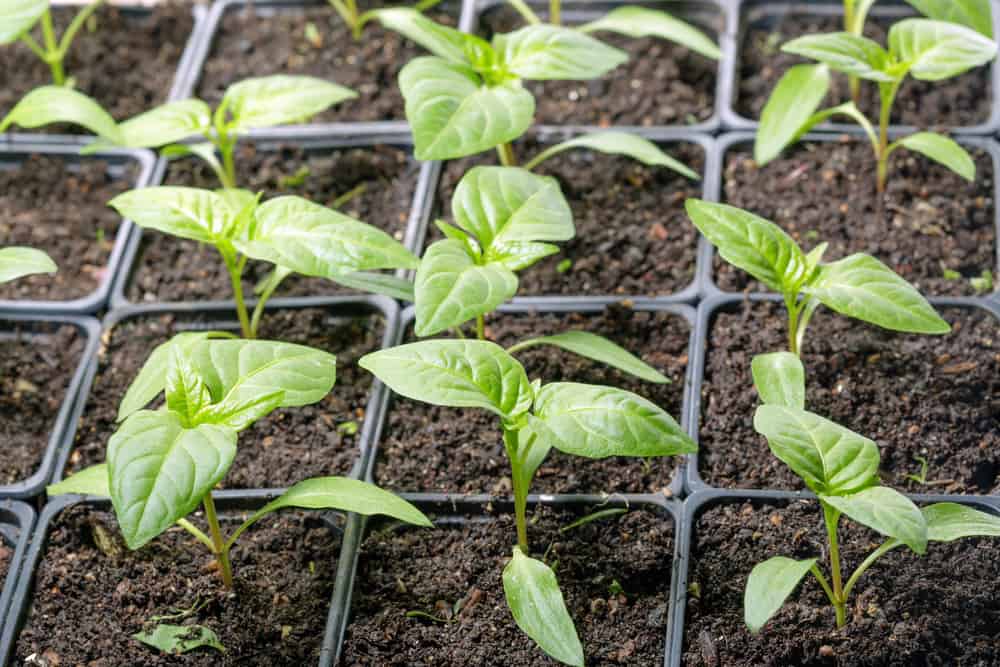
healthy pepper seedlings started indoors
You could also start tomatoes in February, but I tend to hold off until March, as the sooner you start them indoors, the larger they will be at transplant time. I find they tend to get too long and leggy when started this early, so I hold off. (see my tips for planting tomato seed!)
Brassica's (broccoli, cabbage, kale, etc) can be started indoors in February also, but I tend to prefer to start them using the winter sowing method.
Winter Sowing in February:
- brassicas
- greens
- peas
February is when I get my first winter sowing jugs planted, and I always do my brassica plants using this method. I sow the seed heavily, and use one jug for each variety I am growing. These do really well using this method, and by sowing them outdoors, it frees up more room inside for things like tomatoes and peppers. Yet by winter sowing them, they are more protected from snail and slugs.
This method also works great for greens such as lettuce, spinach, chard, mustard, etc. Lettuce is a little more sensitive to cold than many of the other greens, so I would wait until the end of the month for that or wait until March.
Not vegetables, but I will also start my hardy perennial seeds using winter sowing this month, things like phlox, lavender, rudbeckia, etc...
Vegetable Seeds to Start in March:
Direct Sowing in March:
- brassicas
- root crops (beets, carrots, radish, turnip, rutabega, parsnips, etc)
- potatoes
- greens (spinach, chard, mustard, arugula, bok choy, etc)
- more peas
- more broad beans
- asparagus crowns
If you haven't started your brassica's or greens by seed indoors or by winter sowing, they can be started by direct sowing this month as well. I will also start my root crops by direct seeding this month.
St Patricks day is a great day to get your potatoes in around here (see how I grow potatoes in containers!)
It's also a good month for getting a few more batches of peas and broad beans planted. I tend to sow these every two weeks starting as soon as I can in Feb and going through the end of this month.
Get those asparagus crowns planted this month!
Indoor Seed Starting in March:
- all the tomatoes
This month is tomato month. I grow a lot of tomato starts to sell, and spend most of the month getting them sown indoors. This is usually the last thing that I will sow indoors for the year.
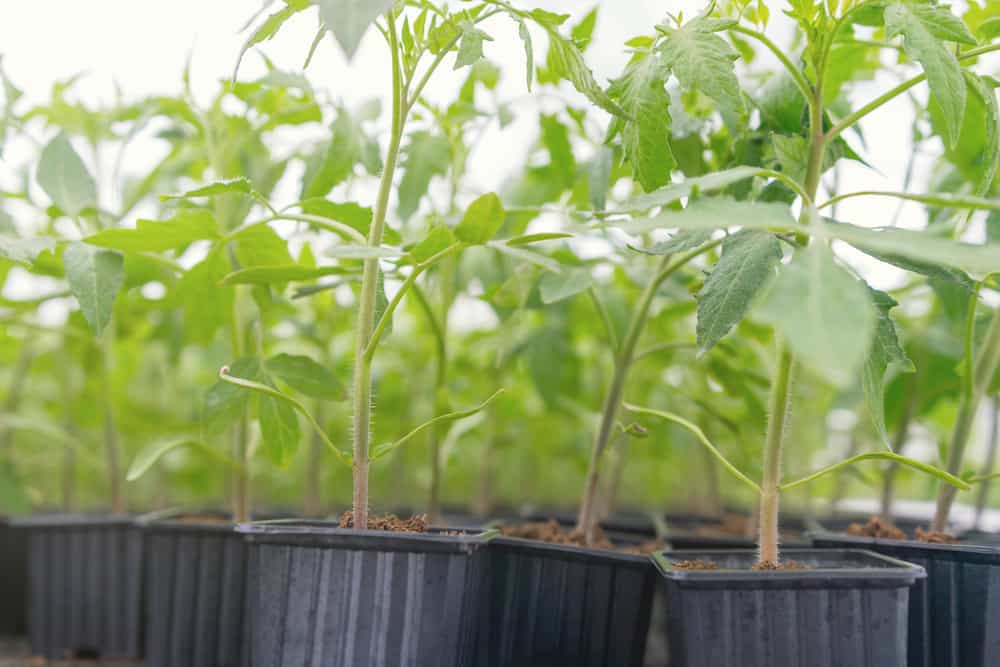
healthy tomato seedlings started indoors
Winter Sowing in March:
- more brassicas
- more greens
If you haven't got your brassicas or greens started yet, get them started as early as you can this month. It is still too cold to start any of the warm season crops like tomatoes, peppers, beans, squashes, cucumbers, melons or pumpkins.
But you can start more flowers using winter sowing this month. I usually start my more tender perennials and annuals this month. Things such as sweet peas, marigolds, zinnias, snapdragons, lobeila, alyssum, etc.
Vegetable Seeds to Start in April:
Direct Sowing in April:
- brassicas
- root crops (beets, carrots, radish, turnip, rutabega, parsnips, etc)
- potatoes
- greens (spinach, chard, mustard, arugula, bok choy, etc)
- more peas
This is really the last month to get your brassicas planted by seed. After this month, consider purchasing starts and transplanting them.
If you started your own seed back in February, you can transplant them this month. If you started them indoors, be sure to harden the seedlings off before planting directly in the garden.
Root crops are better off sown this month than later. They are cold tolerant crops, and it will be harder for them to germinate when it gets warmer.
Carrot seed especially needs to stay moist to germinate. Once it warms up, you may need to go out and water it 3-4 times a day for it to stay moist enough to germinate.
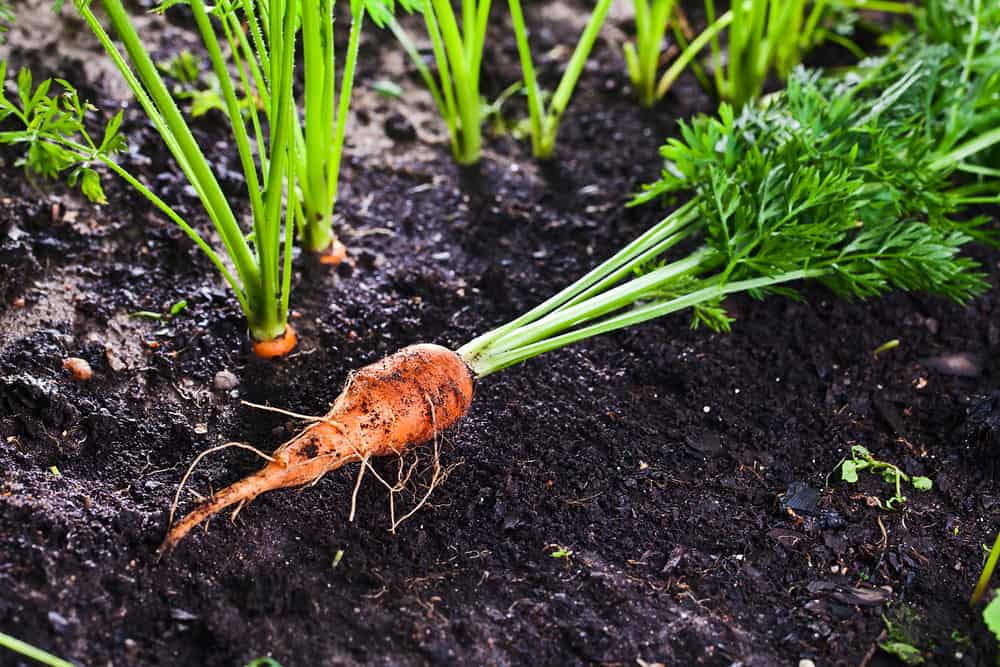
get those root crops started now for better success
Go ahead and plant another round of greens and peas. Broad beans it's probably too late for now also.
You can also still put potatoes in if you haven't yet, or plant another round of early potatoes such as Yukon Gold.
Now is the time that I like to transplant out my onion seedlings as well (see here for tips on transplanting onion seedlings!). Also be sure to harden these off before planting directly in the garden.
Winter Sowing in April
I guess this is technically spring sowing? Anyway, now is the time to start those warm season crops using winter sowing.
Go ahead and try all those warm season crops like tomatoes, peppers, squash, melon, cucumbers, pumpkins, beans, etc. Just remember, these crops don't like to be exposed outside to temps below 50.
When the jugs or still closed, this will protect them a little bit, maybe down to 40. But if the seeds have germinated, and we get a really cold spell, you may still need to bring these indoors to protect them from freezing.
I don't tend to use this method for these crops, as I prefer to direct sow all of these except for the tomatoes and peppers which I start indoors.
Vegetable Seeds to Start in May:
Direct Sowing in May:
- squash (both winter and summer)
- melons
- cucumbers
- pumpkins
- beans
- corn
Again, just a reminder, these crops don't like to be exposed outside to temps below 50. Watch the weather, if these have germinated and we get a late season cold spell, cover them to protect them.
Or, plant an early crop early in the month, and then plant a second planting after May 15th, which is usually our safe date for warmer night time temps.
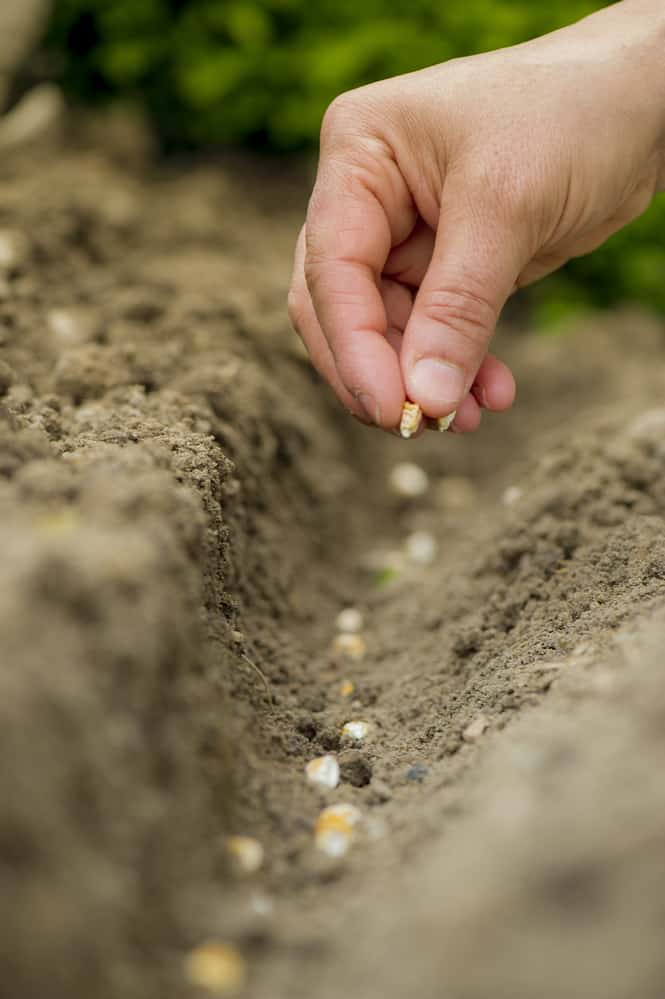
May is truly "plant all the things" month, when those warm season crops can finally go in. It is also the month most people start their vegetable gardens, but so much more can be done earlier than May!
Also feel free to transplant all the seedlings after hardening them off properly, such as asparagus, artichokes, celery, onions, tomatoes, peppers, brassicas, and greens.
Be on pest control watch for slugs, snails, rabbits and birds! I prefer to use Sluggo for our crazy slug and snail population. (see my tips for transplanting tomatoes and for using eggshells in the garden).
Vegetable Seeds to Start in June:
You can start more beans through out this month by direct sowing and into next month. And if you missed all the warm season crops being direct sown in May, get them in as early as you can this month,
Ha! Thought you were done with starting seeds, did you? Well, not if you want brassicas next fall!
Now is the time to plant your seed for your winter broccoli, cabbage, brussel sprouts, kale, etc.
I don't sow these indoors, nor do I direct sow, or winter sow for this. I plant these seeds in trays that I keep up by the house in the shade.
They won't sprout well in the heat, but outside in the shade on my deck, is perfect for germination. Once they have germinated, then I move them to a place where they get the gentle morning sun, but are out of the hot afternoon sun.
Keep them watered well, and just keep nursing them along for another month or so before it's time to transplant them.
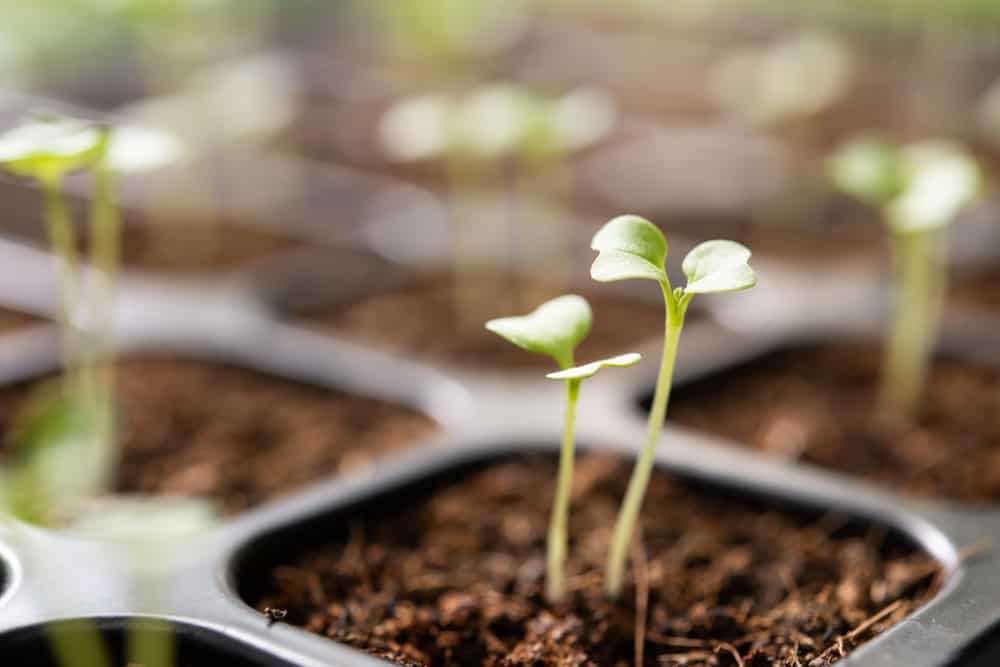
young brassica seedling freshly germinated in a plant flat
Vegetable Seeds to Start in July:
The only thing I really will plant in July by seed, is more beans. Garlic is usually ready to be harvested in early July, and after I pull it out, I will plant some bush beans it that place. See my article How and When to Harvest Garlic.
Also, place your garlic orders now! They sell out quick, and they will be hard to find in October when it is time to plant them!
Vegetable Seeds To Start in August and September:
Take a break! I do! No seed starting for me this month. Instead, it's all about Food Preservation!
However, I do plant my potatoes, as I am harvesting them. (See how I plant potates in containers!)
Vegetables to Start in October:
Garlic time! Mid month is when you need to get your garlic planted.
You can plant it from now until spring as long as the ground isn't frozen, but it does best if planted this month. You will have much larger bulbs when planted this early, so don't wait!
Vegetables to Start in November and December:
Nope, Nada, None for me! But if you have a crazy green thumb that won't quit, you could start your hot pepper seed indoors in December!
However, a tip I will share, if you want the most variety of vegetable seed to choose from, starting shopping for your vegetable seed online. Most people shop after the holidays, and many things are sold out by then!
Final Thoughts on When to Start Seeds in Garden Zone 8b
I hope this zone 8b planting guide has been what you were looking for, and given you a better idea of when to start your seeds. Please do me a favor, and share this post on your social media, or pin it below so you can find it later.
Other Articles You May Be Interested In:
Does Zucchini Need a Trellis + Growing Tips!
Why Are My Cucumber Leaves Turning Yellow?
15+ Best Vegetables for Container Gardens
30 Vegetables That Grow in the Shade
20+ Purple Vegetables for Your Garden
Want to Remember This?
I hope you found this article on when to start seeds in garden zone 8b helpful. Please pin this article so you can easily find it when you need it, or feel free to share it on Facebook too!
Please pin "When to Start Seeds in Garden Zone 8B" to your favorite Gardening board on Pinterest!



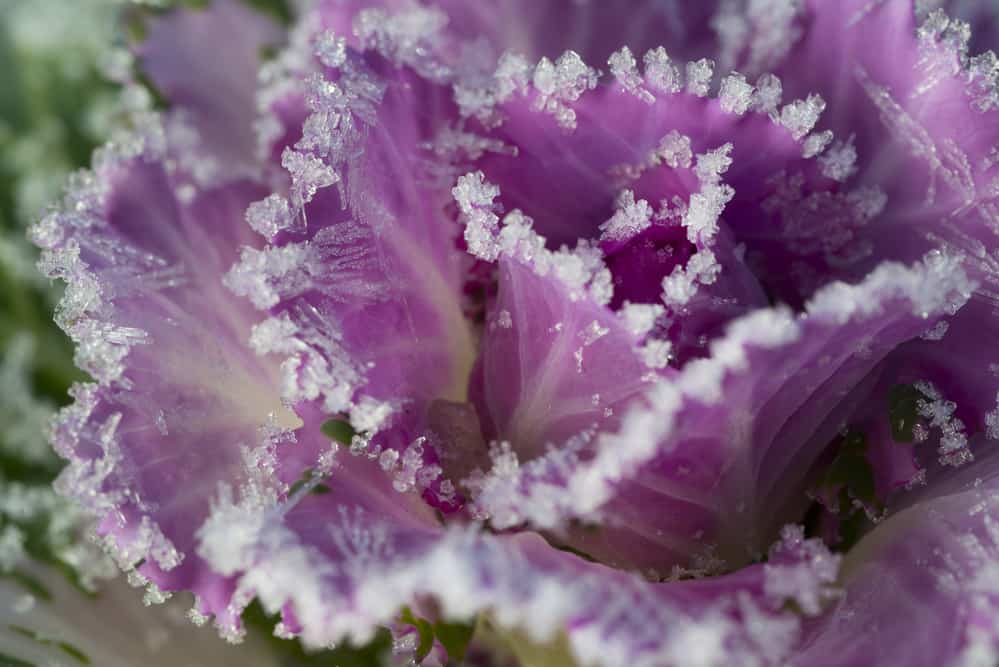
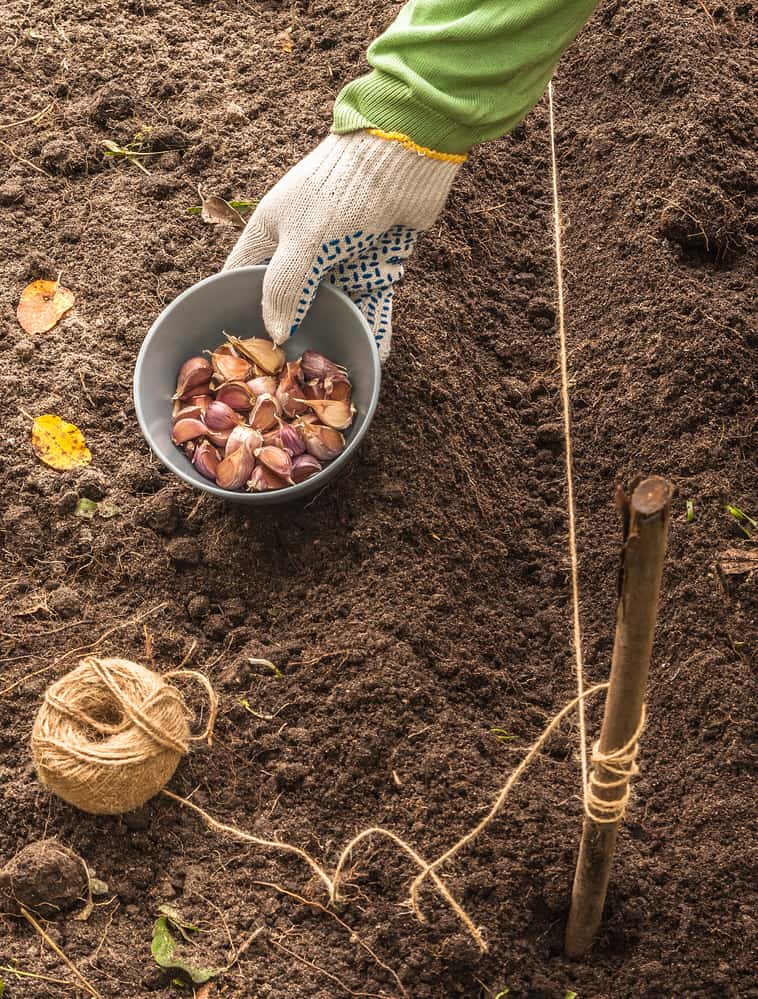
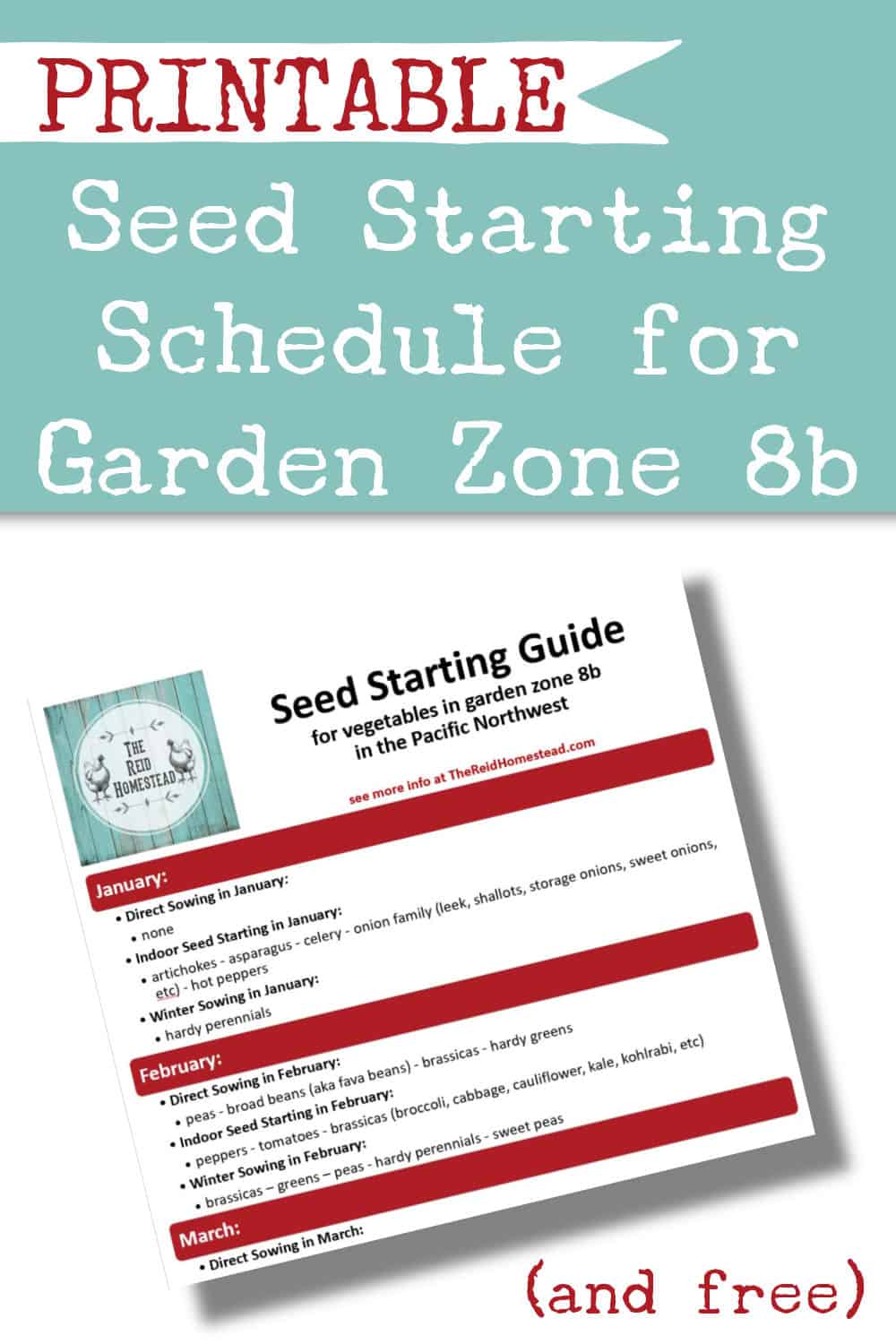
Alison McCaleb
i just read the article about month to month seed sowing in Zone 8b and I didn't see anything written about when to direct sow tomato seeds, which I am interested in doing and would like to know what month I can do that.
Tamara
Hi Alison, I'm not sure where you live, but here in my area of the PNW, our growing season is so short and cool, that direct seeding of tomatoes is not a good idea as the plants will not have enough time to reach maturity in order to actually bear fruit. But if you were going to direct seed them, it would need to be after your night time temperatures are above 50 degrees. Tomato plants do not do well at all in temperatures lower than that. I would talk to other gardeners in your area, or to your local nursery, to find out what a safe date would be. Here near Seattle, it is usually mid-May. I hope that helps!
Alison McCaleb
Hello,
I live in East Texas and also live in zone 8b. Our daytime temperatures are pushing 75 - 80 degrees and our night time temperatures are also warming up. I am not really interested in direct sowing seeds into the ground, but am more interested in growing vegetables, herbs and flowers in containers for the first time. Would I use the same schedule for direct sowing seeds or use a different schedule for container gardening?
Tamara
Hi Alison, I found this Texas seed starting schedule for you to use as you guys have a much longer warm growing season than up here in the PNW. It looks like you can start almost everything quite a bit earlier than we can. This URL includes all the different gardening zones in Texas, starting with zone 6 at the top, so scroll down to find the zone 8 schedule. Hope that helps! Here is the link: https://www.ufseeds.com/texas-vegetable-planting-calendar.html